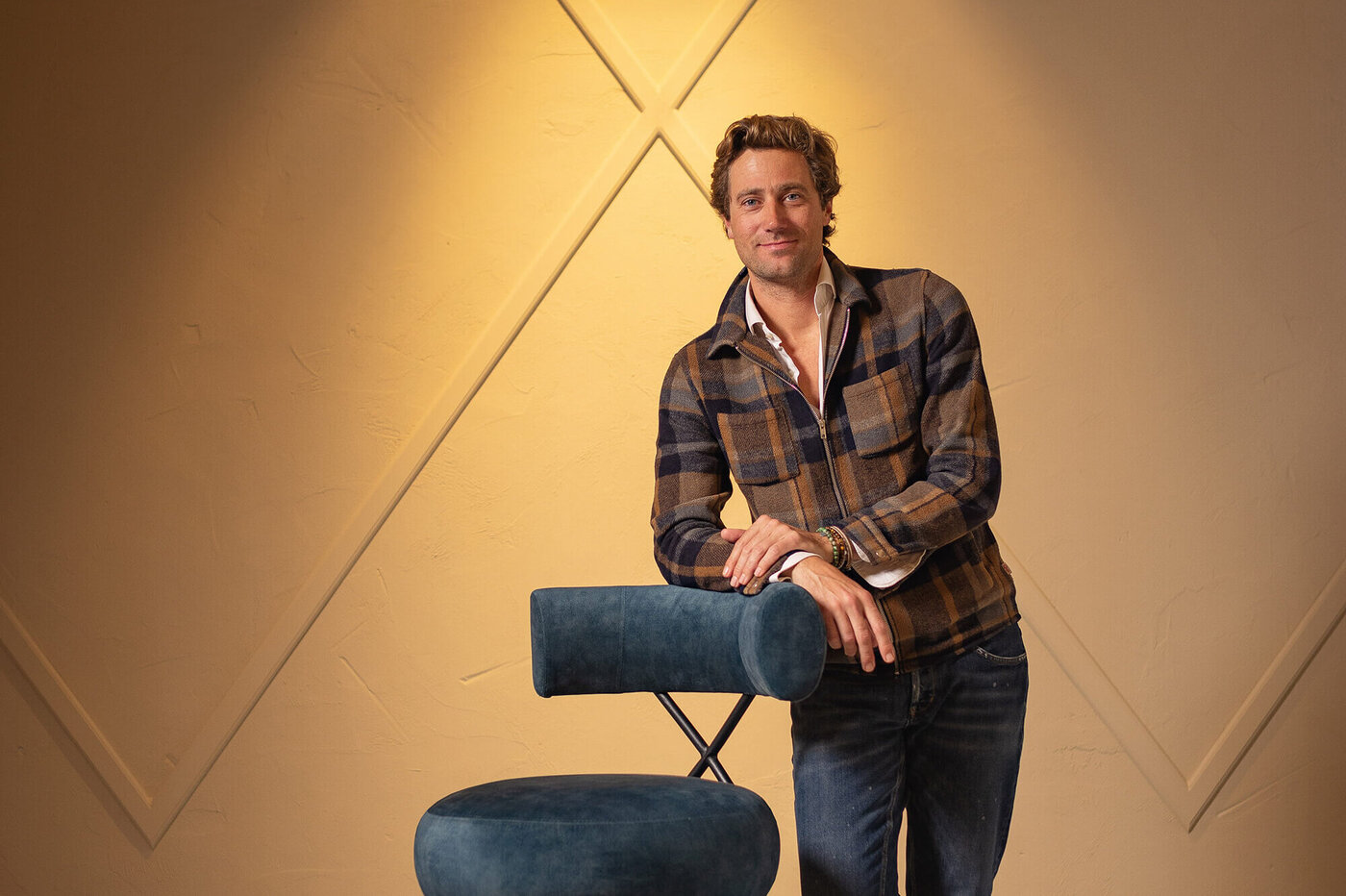The best products arise in practice, he thinks. "If you design from a concrete question and context, there is always an urgency in such a chair or piece of furniture." Lars Snellaars graduated from the famous Design Academy Eindhoven in 2006. After a few years of working as a junior designer at agencies, he took the step to start his own business. He certainly calls himself enterprising: creative and commercial. But not too businesslike. He likes to leave that to his clients, with whom he often works intensively. This also applies to the reopened Brasserie Royal, for which Snellaars signed for the total metamorphosis.
Total concept
Royal was an iconic but dated restaurant in a small village named Drunen in the Southern part of The Netherlands. "Royal is, the name says it, rather large, and was divided into all separate spaces. It didn't look like it," Snellaars acknowledges. Drunen stands for understated chic. So it could be comfortable, but not ostentatious. Snellaars was looking for inspiration in the area, the Drunen dunes. "From moss green and sheltered in round seats at the entrance, to something more open and with the purple shades of heather around the central bar. And then suddenly that light plain in the conservatory unfolds, the sensation of beach without sea: clay plaster with sand structure, skylights and trees with lights in them for an instant holiday feeling. Jazz sounds through the speakers, and thanks to the different atmospheres you can go to Royal twice a week and still have a totally different experience."
'The Roaring Twenties'
The design of 'The Roaring Twenties Chair' is typical Snellaars: with a clear story. "Roaring Twenties refers to that lively period a century ago, after the Spanish Flu and the First World War. Even now after Covid, people need to enjoy, party. No tight, angular shapes but soft and round, low in intimate seats and high at the bar, and comfortable enough to sit on for an evening. The chair is rotatable, so that you can see everyone coming in while sitting at the bar. The design is striking, in Art Deco style with a cross in the back, a shape that also comes back on the walls. The upholstery is nice and round and soft, and then those fringes hey. You don't need them, but they do make everything more fun. This chair is just looking forward to it."
And that also applies to Snellaars itself. "I see myself a bit like a late bloomer, I'm getting better and better." He does not feel akin to the generation of Dutch Designers, he saw in Jan des Bouvrie more of an example. "I am an aesthetic artist, I learned a lot from Jan. Just working conceptually, and then appearing in magazines with 'limited offs', is not for me. Designs must be functional and find their way into restaurants, residential houses; places where people can use them."
From his studio in Spain, where he lives within walking distance of the beach and sea with his family, he creates interior designs for private individuals, hospitality interiors, but he also works on items and complete collections for reputable brands. His working method is intensive and thorough, there is at most room for one new manufacturer every year. The best thing is when commissioned designs eventually find a broader right to exist. As happened with 'The Roaring Twenties Chair', which he offered to Satelliet. The swivel chair has now been included as 'ReUnited' in the Satelliet Originals collection. "That's really nice. I'm looking forward to seeing how other designers will apply this theatrical eye-catcher."






